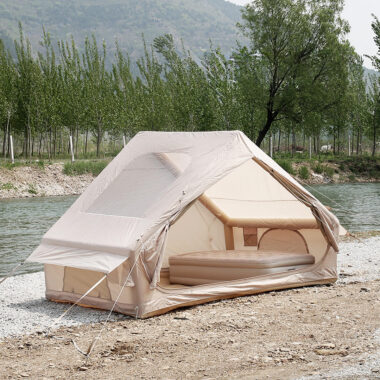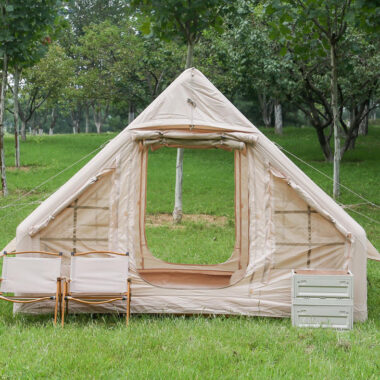🔍 1. Why Quality Control Matters in Tent Manufacturing
Quality defines trust — especially for camping tents used in unpredictable weather.
A strong camping tent supplier ensures each tent meets international durability and waterproof standards before leaving the factory.
Buyers rely on consistent QC systems to avoid costly returns, negative reviews, or brand damage.
Good factories see QC not as inspection alone, but as a full performance assurance system — from materials to packaging.
🧵 2. Raw Material Inspection
Quality control starts long before sewing.
Incoming fabrics are checked for density, coating thickness, tear strength, and color consistency.
Poles and zippers undergo sample testing for load capacity and smoothness.
A reliable factory keeps detailed inspection records for every batch.
Rejecting substandard materials early helps maintain stable quality across large production runs and builds confidence in long-term supply.
⚙️ 3. In-Process Quality Checks
During production, QC teams inspect each step — cutting, stitching, seam taping, and logo printing.
They verify alignment, seam width, and thread tension.
Automatic sewing lines with barcode tracking help detect mistakes early.
Any tent that fails mid-process checks is removed for repair or replacement immediately.
By maintaining real-time inspection, factories reduce defects and keep the assembly line efficient and accurate.
💧 4. Waterproof and Functional Testing
Every professional supplier conducts hydrostatic head tests on finished tents.
This test measures how much water pressure fabric can withstand before leaking — a key benchmark for waterproof rating (usually 1500–6000 mm).
Seam sealing, zipper covers, and floor coatings are tested under simulated rain.
Some advanced factories even have rain simulation chambers and wind tunnels, ensuring tents perform well in extreme outdoor conditions.
🏗️ 5. Assembly and Durability Checks
Before packaging, sample tents are fully pitched and inspected for:
Structural balance and frame tension
Door and window operation
Zipper performance
Internal ventilation and condensation control
QC inspectors document all findings with photos.
This physical setup test ensures each model meets the design intent and practical usability promised to customers.
📦 6. Final Inspection and Packaging
Finished tents are cleaned, folded, and packed with clear labeling.
Each carton includes a checklist of components — poles, stakes, ropes, and manuals.
Cartons are drop-tested to confirm packaging strength.
A qualified OEM/ODM factory also offers customized branding: logo bags, retail tags, or barcoded boxes — all while maintaining strict export safety and labeling standards.
🧪 7. Third-Party and Certification Support
Many global buyers request third-party inspections (SGS, BV, or Intertek).
Trusted suppliers fully cooperate with these audits and can provide reports on material safety, flame retardancy, and waterproof levels.
Certifications like ISO9001 or BSCI prove that the factory operates with consistent, responsible production systems.
🌍 8. Building Long-Term Confidence
For buyers, partnering with a supplier who prioritizes quality control means more than stable products — it means peace of mind.
Factories that continuously improve inspection systems, train QC staff, and document every production step help your brand build long-term trust in the competitive camping market.








